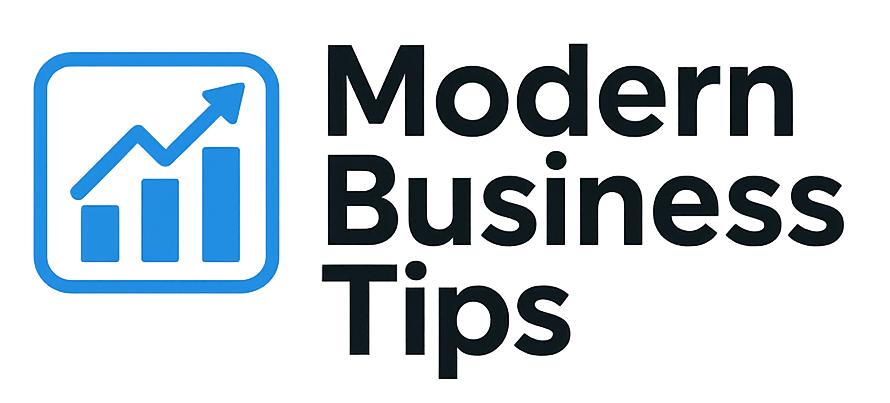In today’s digital world, knowing how to make an ecommerce site is key for any business. Online shopping is more popular than ever, making ecommerce skills very important. As I start building my online store, I see how important it is to create a digital space that customers love.
This article will help you through every step of making an ecommerce site. We’ll cover the basics and advanced marketing strategies. By the end, you’ll know how to create a successful online store.
Key Takeaways
- Understanding the importance of ecommerce in today’s market.
- Identifying the right ecommerce platform for your needs.
- Choosing a memorable domain name and reliable hosting provider.
- Design principles that enhance user experience.
- Effective marketing strategies to attract and retain customers.
- Legal considerations for running an online business.
- Continuous performance analysis for ongoing improvement.
Understanding the Basics of Ecommerce
Ecommerce is when you buy and sell things online. It has changed how businesses work, making it easier for everyone. Knowing the basics of ecommerce is key for those new to this field.
What is Ecommerce?
Ecommerce lets people and businesses do business online. You can sell things, offer services, or help with transactions. It’s all done online, reaching people all over the world and making things easier.
Types of Ecommerce Models
It’s important to know the different ecommerce models. Here are the main ones:
| Model | Description | Example |
|---|---|---|
| Business-to-Consumer (B2C) | Businesses sell directly to consumers. | Amazon |
| Business-to-Business (B2B) | Transactions between businesses. | Alibaba |
| Consumer-to-Consumer (C2C) | Consumers sell to other consumers. | eBay |
| Consumer-to-Business (C2B) | Consumers offer products or services to businesses. | Freelancer platforms like Upwork |
Benefits of Starting an Ecommerce Business
Starting an ecommerce business has many benefits. You can reach more people, work at any time, and save money. Some benefits include:
- Global reach and customer accessibility
- Lower operational costs
- Flexibility in pricing and product offerings
- Data-driven insights for improvement
Choosing the Right Ecommerce Platform
Finding the best ecommerce platform is key for any online business. There are many options, so comparing them is important. Platforms like Shopify, WooCommerce, and BigCommerce have different features. It’s vital to know what you need before choosing.
Popular Ecommerce Platforms Compared
It’s smart to look at the main features of top ecommerce platforms. Here’s a table comparing three popular ones:
| Platform | Ease of Use | Scalability | Integration Options | Transaction Fees |
|---|---|---|---|---|
| Shopify | Very user-friendly | Highly scalable | Extensive app marketplace | Up to 2.9% + 30¢ |
| WooCommerce | Less intuitive, requires WP knowledge | Flexible, allows for growth | Many plugins available | Free, hosting fees apply |
| BigCommerce | Moderately easy | Robust scalability | Varied integration options | Up to 2.5% |
Factors to Consider When Selecting a Platform
When looking for the perfect ecommerce solution, consider these factors:
- Ease of Use: Choose a platform that makes setup and management easy.
- Scalability: The platform should grow with your business.
- Integration Options: Make sure it connects well with tools and services you need.
- Transaction Fees: Know the costs to plan your budget.
Setting Up Your Account
After picking a platform, it’s time to set up your account. Here’s what you’ll do:
- Sign up with a valid email and a strong password.
- Pick a pricing plan that fits your business.
- Enter your store’s details, like name, address, and payment info.
Domain Name and Hosting Options
Choosing the right domain name is key for an ecommerce business’s success. A good domain name boosts brand recognition and search engine ranking. Look for a name that’s short, easy to remember, and shows what your brand is about.
How to Choose a Domain Name
Here are the main steps to pick a domain name:
- Make sure it fits your brand well.
- Keep it short and simple.
- Pick a relevant extension like .com or .store.
- Avoid hyphens and numbers to prevent confusion.
- Use a keyword related to your business if you can.
Recommended Hosting Providers
Finding the right hosting is vital for your ecommerce site’s performance. Good hosting means less downtime and faster speeds. Here are some top hosting providers:
| Provider | Features | Price Range |
|---|---|---|
| Bluehost | Free domain for the first year, SSL included, 24/7 support | $3.95 – $13.95/month |
| SiteGround | Managed WordPress hosting, excellent support, daily backups | $3.99 – $11.99/month |
| HostGator | Unmetered bandwidth, free website builder, 45-day money-back guarantee | $2.75 – $5.25/month |
Domain Registration Process
Registering a domain is easy. Just follow these steps:
- Find a domain name and check if it’s available on a registrar like GoDaddy or Namecheap.
- Add the domain to your cart and go to checkout.
- Enter your contact info for registration.
- Pay for your domain to secure it.
- Set up your domain and link it to your hosting provider.
Designing Your Ecommerce Site
Building a great ecommerce website is all about key elements that make it easy to use and sell more. It’s important to make sure your site is easy to navigate and find what you need. With more people shopping on their phones, making your site mobile-friendly is a must. Also, the colors you choose can really impact how users feel and interact with your site.
User-Friendly Design Principles
To make a successful ecommerce site, I focus on design that’s easy for users. Here are some important points:
- Intuitive Navigation: I make sure menus are simple to understand, so users can find products fast.
- Accessible Layouts: My design keeps things clear and organized, making it easier to use.
- Clean Interfaces: I keep things simple and uncluttered, so products can grab attention.
Importance of Mobile Responsiveness
As more people shop on their phones, having a mobile-friendly site is key. A responsive site adjusts to any screen size, giving a smooth experience on all devices. This not only makes users happy but also helps your site rank better in search results, making it more visible.
Choosing the Right Color and Font Schemes
Choosing the right colors for your ecommerce site is very important for your brand and how customers feel. I pick colors that match my brand and make customers feel the right way. The fonts I choose also matter a lot. The right mix of colors and fonts can help customers decide to buy and make your site look better.
| Design Element | Importance | Best Practices |
|---|---|---|
| User-Friendly Principles | Enhances usability and user experience | Intuitive navigation and clean layouts |
| Mobile Responsiveness | Cater to mobile users and boost SEO | Implement responsive frameworks |
| Color and Font Schemes | Affects branding and customer emotions | Consistent colors and readable fonts |
Adding Products and Categories
Adding products to an ecommerce site is more than just listing items. It’s about organizing your inventory well. This helps guide customers through the buying process. I make sure my product categories are easy to use, so customers can find what they need quickly.
Clear categories make the site easy to navigate. This can really help with their buying decisions.
How to Organize Your Inventory
Start with broad categories and then get specific with subcategories. This makes it easier for customers to find what they’re looking for. It also makes the shopping experience better.
It’s important to regularly check and update your categories. This keeps them relevant and in line with what you have in stock.
Writing Effective Product Descriptions
Writing good product descriptions can really boost sales. I focus on highlighting the key features and benefits. I also make sure the language speaks to the target audience.
Using the right keywords in descriptions helps with search visibility. A good description doesn’t just tell; it convinces buyers to act.
Importance of High-Quality Images
Visuals are key when adding products to an ecommerce site. High-quality images grab customers’ attention and can sway their decisions. I use clear, professional photos that show the product from all sides.
Setting Up Payment Processing
For any ecommerce business, setting up reliable payment options is key. Customers want easy and secure ways to pay. This means having many payment choices, from credit cards to digital wallets.
Overview of Payment Methods
Payment methods greatly affect how customers feel about shopping online. Some common ways to pay include:
- Credit and Debit Cards
- PayPal
- Apple Pay and Google Pay
- Bank Transfers
- Cryptocurrency Options
Offering many payment options can make customers happier and more likely to buy.
Integrating Payment Gateways
Payment gateways are vital for smooth transactions. Companies like Stripe, Square, and Authorize.net make it easy to connect to your site. I check if they work well with my platform and offer useful features like fraud protection.
Ensuring Transaction Security
Keeping transactions safe is a must for ecommerce. SSL certificates protect customer data, making online shopping secure. Following PCI standards also helps keep data safe. I focus on these steps to keep my customers’ trust and protect their info.
Implementing Shipping Solutions
In the world of ecommerce, logistics are key to customer happiness. Good shipping solutions can make or break a business. It’s important to pick the right shipping partners, set up shipping rates well, and offer free shipping to stay competitive.
Choosing the Right Shipping Partners
When picking shipping partners, look for reliability and speed. I compare different carriers to see who fits my business best. I consider how fast they deliver, if they track packages well, and if they’re affordable. Good shipping solutions work for both local and international deliveries, making shopping smooth for customers.
Setting Up Shipping Rates and Policies
Clear shipping rates are key for trust with customers. I look at different ways to set rates, like flat fees or rates based on weight or distance. This helps me create policies that meet many customer needs. Keeping an eye on rates helps me adjust to changes in the market or with carriers. For tips on better shipping, I check out this article.
How to Offer Free Shipping
Free shipping can boost sales and make customers happier. I use methods like covering costs or setting a minimum buy. I also run special offers for free shipping to get more people to buy. It’s important to figure out if these strategies are good for my business.
Improving shipping solutions takes careful thought, balancing operations and customer needs. By choosing the right partners, setting up rates wisely, and using free shipping, I can make my ecommerce business thrive. This helps keep customers coming back.
Legal Considerations for Ecommerce
Starting an ecommerce business taught me the importance of knowing the law. I had to deal with sales tax, privacy policies, and terms and conditions. Not paying attention to these can cause big problems later.
Understanding Sales Tax Requirements
One big challenge was figuring out sales tax rules, which change by state. I found out that tax rules depend on where my business is and where my customers are. Each state has its own tax rates and rules for what’s tax-free. I had to set up a system to handle sales tax to avoid fines.
Privacy Policies and Customer Data Protection
As my store grew, keeping customer trust was key. I made sure to have clear privacy policies. These explained how I collect, use, and share data. A good privacy policy protects my business and shows I care about customer data.
Terms and Conditions for Your Store
Having clear terms and conditions was essential. They outlined things like return policies and what customers are responsible for. Reviewing my terms helped avoid confusion and protect my business. It also made it clear what customers can expect when shopping with me.
Marketing Your Ecommerce Site
Getting more people to visit my ecommerce site is key. There are many ways to do this, like using social media and email marketing. I’ll look into these strategies to make my site more visible and engaging.
Effective Digital Marketing Strategies
Digital marketing for ecommerce needs a mix of tactics. SEO helps my site show up in search results. Content marketing draws in people with useful info. Paid ads, like Google Ads, target specific users based on their online habits.
Utilizing Social Media for Promotion
Social media is vital for reaching my audience. Sites like Instagram and Facebook let me show off my products and connect with users. Running ads and making engaging posts can boost sales and loyalty.
Email Marketing Fundamentals
Email marketing keeps customers coming back. I build a list by asking people to opt-in and offer special deals. Personalized emails and segmenting my list help me reach the right people.
| Strategy | Description | Benefits |
|---|---|---|
| SEO | Optimizing the site to rank higher in search results. | Increased visibility and organic traffic. |
| Content Marketing | Creating valuable content to attract customers. | Builds trust and authority. |
| PPC Advertising | Paying for ads on search engines or social media. | Quickly increases traffic and targets specific groups. |
| Social Media | Engaging with customers on social platforms. | Boosts brand awareness and loyalty. |
| Email Marketing | Sending promotional content to subscribers. | Increases conversions and repeat business. |
Providing Excellent Customer Service
In today’s competitive ecommerce world, great customer service is key. It builds loyalty and boosts sales. Customers want quick help and solutions to their issues. Investing in top customer support tools makes customers feel valued and heard.
Importance of Customer Support
Strong customer support is the backbone of ecommerce success. In the US, 44 percent of shoppers stop buying from brands with bad service. Quick and effective help builds trust and keeps customers coming back. I aim to meet these expectations to increase satisfaction and keep customers.
Tools for Managing Customer Inquiries
The right customer support tools make managing inquiries easier. Chatbots, helpdesk software, and ticketing systems are essential. They automate tasks and let me focus on complex issues, making my work more efficient. Empowering customers to solve problems on their own also improves service quality.
Strategies for Handling Returns and Refunds
Clear refund policies are key to customer happiness. I make sure return procedures are easy and secure. Efficient returns build trust in the brand. I aim for a smooth experience, which can boost loyalty. Transparent policies protect customers’ interests and improve profit margins.
For more tips on improving ecommerce customer service, check out this resource.
Analyzing and Optimizing Performance
To move my ecommerce business forward, I focus on detailed performance analysis. Knowing how users behave and what drives sales is key. A strong Google Analytics setup is the first step to track these metrics, helping me make informed decisions.
Setting Up Google Analytics
Getting Google Analytics set up is critical for understanding my ecommerce site. This tool helps me see how visitors interact, what they buy, and where they come from. It also lets me track important actions, like purchases and sign-ups. This info is essential for tweaking my marketing and improving sales.
Key Metrics to Track
Some metrics are more important than others in my ecommerce journey. I keep an eye on traffic sources, bounce rates, average order value, and conversion rates. These metrics show how well my marketing works and help me understand my customers. They also guide my inventory management and improve the user experience.
A/B Testing for Continuous Improvement
Using A/B testing is key for making my ecommerce site better. By trying out different things, like page layouts or colors, I find out what my customers like. This approach helps me keep improving, making my site more appealing and boosting sales. It keeps my business competitive and in tune with what customers want.
Future-Proofing Your Ecommerce Business
In the fast-evolving ecommerce world, it’s key to focus on future-proofing. Keeping up with trends helps me stay ahead and predict what customers will want next. I stay informed by reading key publications and joining industry forums.
It’s also vital to plan for growth. As my business expands, I need a system that can handle more traffic and products. I choose platforms that grow with me, ensuring a smooth experience for my customers.
Exploring new technologies is another important step. AI helps me offer personalized shopping and better customer service. Augmented reality lets customers see products in new ways. By using these tools, I keep my business leading in the digital world.



